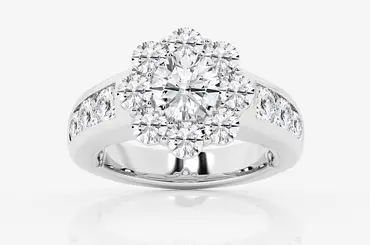There is no doubt shea butter is one of the best natural oil, and you will find it almost in every household. Only that it comes in two varieties which can be yellow or white.
The major difference is that yellow shea butter is regarded as more nutritionally rich compared to its white counterpart because of the refining process.
The yellow color indicates the presence of carotenoids, which are natural antioxidants that help promote skin elasticity and improve overall skin health. Although refined, white shea butter retains some of its nourishing properties but may have a slightly reduced nutrient content.
Please keep reading for more differences between the two as we will explore the characteristics of yellow and white shea butter.
- What You Should Know About Yellow Shea Butter
- What Is Yellow Shea Butter Good For?
- What You Should Know About White Shea Butter
- What is White Shea Butter Good For?
- Yellow vs White Shea Butter: Which One Is Better?
- Factors to Consider Before Choosing the Right Shea Butter For You
- Frequently Asked Questions
What You Should Know About Yellow Shea Butter
Yellow shea butter is typically produced using traditional extraction methods. The process involves boiling the shea nuts, separating the butter, and allowing it to cool and solidify. As a result, yellow shea butter retains its natural color and has a slightly nutty aroma.
This form of shea butter is rich in vitamins A, E, and F and essential fatty acids, making it highly nourishing for the skin and hair. Small particles or plant materials do not affect its overall quality or benefits, but it may alter the texture and appearance of the butter.
What Is Yellow Shea Butter Good For?
Here are some common uses and benefits of yellow shea butter:
1. Moisturizer
Like white shea butter, yellow shea butter is an excellent moisturizer for the skin. It is rich in fatty acids and vitamins that help nourish and hydrate the skin, making it softer and suppler. It can be applied to the body, face, hands, and feet.
2. Healing properties
Yellow shea butter has natural healing properties that can benefit various skin conditions. It is commonly used to soothe and heal dry skin, eczema, psoriasis, and dermatitis. It may help reduce inflammation and promote skin regeneration.
4. Anti-aging effects
The high concentration of antioxidants in yellow shea butter helps fight free radicals and protect the skin from environmental damage. It can help reduce the appearance of fine lines, wrinkles, and age spots, giving the skin a more youthful appearance.
5. Hair care
Yellow shea butter is widely used in hair care products and treatments. It can moisturize and nourish the hair, promoting hair growth, reducing breakage, and improving the overall health and luster of the hair. It can be used as a hair mask, scalp treatment, or as an ingredient in shampoos and conditioners.
6. Sun protection
While it is not a substitute for sunscreen, yellow shea butter has a natural SPF of around 6, providing some sun protection. It can be used as a moisturizer before sun exposure, but it’s still important to use proper sunscreen for adequate protection.
What You Should Know About White Shea Butter
White shea butter undergoes additional processing steps to refine its appearance and remove impurities. These steps typically involve filtering and deodorizing the butter to achieve a smoother and lighter color.
While the color may vary, white shea butter generally has a more neutral scent than yellow. It also contains similar levels of nutrients and beneficial components.
The additional processing ensures that white shea butter is free from any visible impurities, resulting in a more aesthetically pleasing product.
What is White Shea Butter Good For?
Below are the major areas of strengths of White Shea Butter:
1. Moisturizer
White shea butter is an excellent natural moisturizer for the skin. It can be used on the face, body, and even dry areas like elbows and heels.
2. Hair care
White shea butter can be used to moisturize and condition the hair. It can help reduce frizz, enhance shine, and improve the hair’s overall texture. Some people use it as a hair mask or leave-in conditioner.
3. Lip balm
The moisturizing properties of white shea butter make it an effective ingredient in lip balms and lip care products. It helps soothe and protect chapped lips, keeping them soft and hydrated.
4. Body butter
White shea butter is often used as a base ingredient in DIY body butter recipes. It can be combined with other natural oils and essential oils to create a luxurious and nourishing body moisturizer.
5. Massage butter
Due to its smooth texture, white shea butter can be used as a massage butter. It melts upon contact with the skin, allowing for easy application and providing a moisturizing and relaxing experience.
Yellow vs White Shea Butter: Which One Is Better?
Raw shea butter, also known as yellow shea butter is often considered better than white shea butter due to its higher nutrient content and natural properties.
Yellow shea butter is unrefined, meaning it undergoes minimal processing, allowing it to retain more vitamins and nutrients. As a result, it offers a richer and earthier scent compared to the more processed white shea butter.
Shea butter is generally known to be great, but there are several differences to consider when it comes to white shea butter vs. yellow shea butter.
1. Color and appearance
Yellow shea butter is unrefined and may be yellow or deep golden. It retains its natural scent and has a slightly grainy texture. On the other hand, white shea butter is processed and refined to remove impurities, resulting in a creamy white appearance.
2. Texture and consistency
Another aspect to consider is the texture of white shea butter. Due to the refining process, white shea butter generally has a smoother and creamier texture compared to the slightly grainy texture of unrefined yellow shea butter. This smooth texture makes white shea butter easier to apply and absorb into the skin.
3. Scent
Yellow shea butter has a distinctive nutty aroma, depending on the brand and processing methods. This natural scent is a result of the shea nuts being cold-pressed to extract the butter. Some people find the aroma pleasant and therapeutic, while others may find it overpowering. Being refined, white shea butter has a milder scent or may even be odorless, making it a preferable choice for those sensitive to strong fragrances.
4. Skin benefits
Both yellow and white shea butter offer excellent skincare benefits, but yellow shea butter is often considered more potent due to its higher nutrient content. Shea butter, in general, is renowned for its moisturizing properties and is effective in soothing dry, irritated skin.
5. Lifespan
Usually, the lifespan of shea butter is 24 months or less depending on the storage maintenance. White shea butter, however, can stay more than that due to the effect of chemicals used to elongate its duration.
Factors to Consider Before Choosing the Right Shea Butter For You
The following are the factors that will guide you to choose the right shea butter
1. Purpose
Consider the intended use of the shea butter. If you’re planning to use it in cosmetic applications where color could affect the final product, such as making lotions or creams, white shea butter may be a better choice. Its lighter color allows for easier blending and customization. However, yellow shea butter can provide the same nourishing benefits if the color is not a significant factor.
2. Personal preference
Both yellow and white shea butter offer exceptional skincare and haircare benefits. The choice between them will come down to personal preference. You might enjoy the natural and slightly nutty aroma of yellow shea butter, while others prefer the lighter scent of white shea butter
3. Availability and authenticity
Regardless of color, authentic shea butter should be sourced from reputable suppliers who prioritize fair trade and sustainability. Be mindful of counterfeit products, and always look for trusted brands.
Frequently Asked Questions
What color should pure shea butter be?
Unrefined or raw, shea butter is typically yellow or golden in color, while refined shea butter is often white or creamy in appearance.
What is the best oil to mix with shea butter?
Coconut oil is one of the most suitable oils to mix with shea butter.
Conclusion
Whether you choose white shea butter or yellow shea butter, both options provide natural nourishment and hydration to promote healthier skin and hair.
Ultimately, the choice between white and yellow shea butter depends on personal preference and specific needs, allowing individuals to enjoy each variant’s unique benefits.






